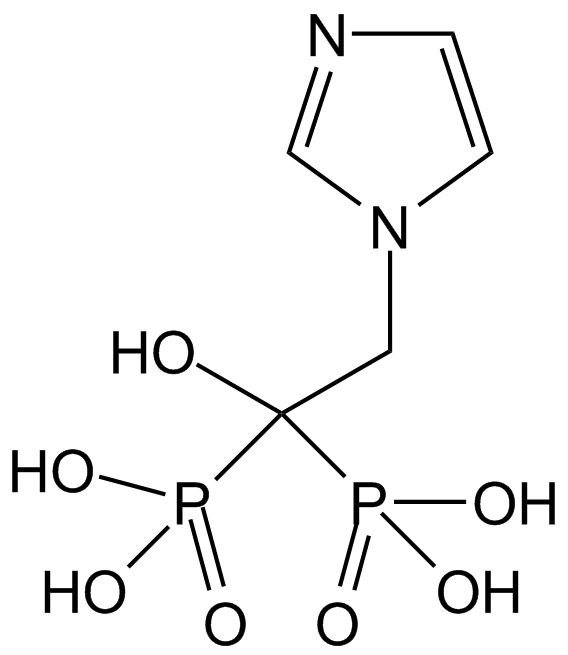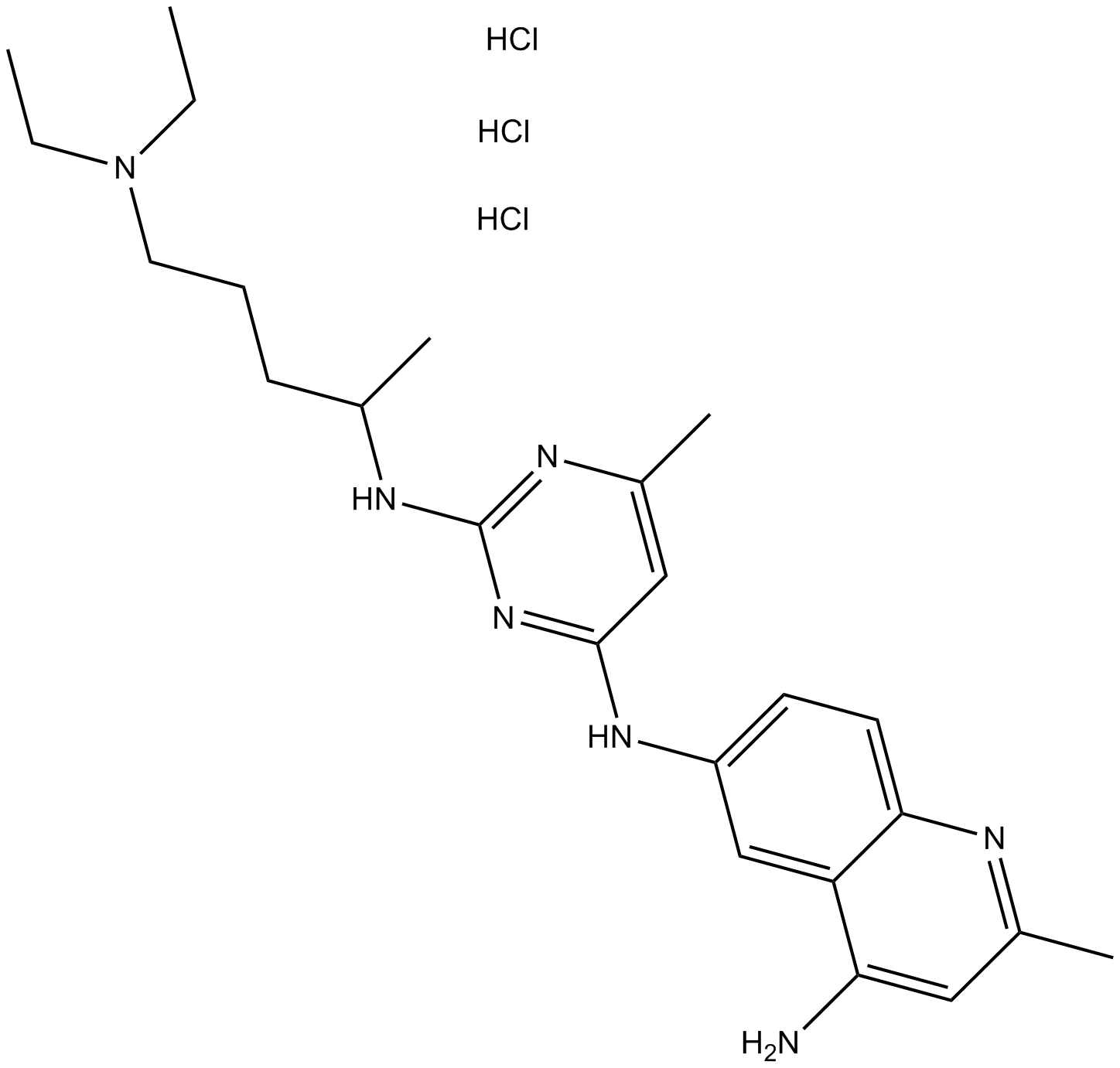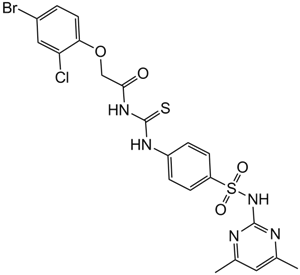Zoledronic Acid
Zoledronic acid (CAS 118072-93-8) is a nitrogen-containing bisphosphonate widely studied for its potent cellular effects. It exerts anti-proliferative and pro-apoptotic activity in vitro, primarily by activating protein kinase C signaling pathways. Research demonstrates that zoledronic acid inhibits proliferation and induces apoptosis in multiple myeloma cell lines. Additionally, investigations suggest its inhibitory effects extend to other cell types, including human fetal cells. Due to these cellular mechanisms, zoledronic acid is frequently utilized in biomedical research focused on cancer proliferation, apoptosis, and therapeutic interventions.
| Physical Appearance | A solid |
| Storage | Store at -20°C |
| M.Wt | 272.09 |
| Cas No. | 118072-93-8 |
| Formula | C5H10N2O7P2 |
| Solubility | insoluble in DMSO; insoluble in H2O; insoluble in EtOH |
| Chemical Name | (1-hydroxy-2-imidazol-1-yl-1-phosphonoethyl)phosphonic acid |
| SDF | Download SDF |
| Canonical SMILES | OC(C[n]1cncc1)(P(O)(O)=O)P(O)(O)=O |
| Shipping Condition | Small Molecules with Blue Ice, Modified Nucleotides with Dry Ice. |
| General tips | We do not recommend long-term storage for the solution, please use it up soon. |
| Cell experiment [1]: | |
|
Cell lines |
The human breast carcinoma cell lines (MCF-7 and MDA-MB-231) |
|
Preparation method |
The solubility of this compound in DMSO is limited. General tips for obtaining a higher concentration: Please warm the tube at 37℃ for 10 minutes and/or shake it in the ultrasonic bath for a while. Stock solution can be stored below -20℃ for several months. |
|
Reacting condition |
0.1–100 μM for 72 hours. |
|
Applications |
Treatment of MCF-7 cells with a range of zoledronic acid concentrations had little effect on apoptosis at 0.1 and 1.0 μM, however, an increase in the proportion of apoptotic cells was observed with 10 μM and 100 μM zoledronic acid compared with control (28.7% and 70.7% vs 22.57%, respectively).Treatment of MDA-MB-231 cells with 0.1–1 μM zoledronic acid did not cause an increase in apoptosis, but treatment with the 10 and 100 μM zoledronic acid resulted in a significant increase in the proportions of apoptotic cells (126.6% and 126.6% of control). A significant time-dependent increase in MCF7 cell apoptosis was confirmed when cells were incubated with 100 μM zoledronic acid for 24–96 hours. |
| Animal experiment [2]: | |
|
Animal models |
The 5T2MM murine model (Male, 6-week-old, C57BL/KaLwRijHsd mice) |
|
Dosage form |
120 g/kg, subcutaneously (sc), twice weekly, 12 weeks. |
|
Application |
Treatment of mice bearing 5T2MM cells with zoledronic acid clearly prevented the development of osteolytic bone disease, decreased tumor burden in bone, and increased survival in a model of established myeloma. |
|
Other notes |
Please test the solubility of all compounds indoor, and the actual solubility may slightly differ with the theoretical value. This is caused by an experimental system error and it is normal. |
|
References: [1] Jagdev SP, Coleman RE, Shipman CM , et al .The bisphosphonate, zoledronic acid, induces apoptosis of breast cancer cells: evidence for synergy with paclitaxel. Br J Cancer. 2001 Apr 20;84(8):1126-34. [2] Croucher PI, De Hendrik R, Perry MJ, et al. Zoledronic Acid Treatment of 5T2MM-Bearing Mice Inhibits the Development of Myeloma Bone Disease: Evidence for Decreased Osteolysis, Tumor Burden and Angiogenesis, and Increased Survival .J Bone Miner Res. 2003 Mar;18(3):482-92 |
|
Quality Control & MSDS
- View current batch:
Chemical structure











